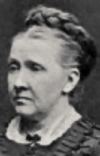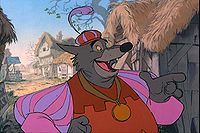Mother’s Day... is near so I thought it would be interesting to know some of the fascinating facts.
Muttertag, La Festa della Mamma, Mothering Sunday, Fête des Mères, Día de las Madres...
it goes by many different names, but however you say it, the expression of love and appreciation is the same.
The Origins of Mother's DayMotherhood has always been celebrated. In prehistoric tribes the mother Goddess was worshiped as the creator of life. Female goddess figures are found in many archeological digs.
In ancient Egypt, Isis was the Queen of Heaven who ruled over all matters concerning mothering. In ancient Greece Rhea was revered as the mother goddess and in ancient Rome it was Hera, the jealous wife of Zeus, and another mother goddess known as Cybele.
Most mothering festivals in early history were in the springtime to celebrate the rebirth of the land and the beginning of the most fertile time of the year. These festivities honored the goddess in all women.
The modern version of Mother's Day with families bringing Mother's Day flowers and gifts to their moms can be traced back to seventeenth century England.
Mothering Sunday was the fourth Sunday in Lent...a special day when all the strict rules about fasting and penance were put aside.
Older children who were away from home learning a trade or working as servants were allowed to return home for Mothering Sunday.
The family gathered for a mid-Lenten feast with Mother as the special guest.
Along with a rare visit from her children, mothers were given treats of cakes and wildflower bouquets.
While ‘Mothering Sunday’ is still celebrated, most now know it as Mother’s Day.
When did Mother's day start being celebrated on Sundays?
In 1914, President Wilson declared Mother's Day a national holiday. Years before, women's groups had celebrated various days to commerate mothers and promote peace during times of war. President Wilson declared Mother's day to be celebrated the second Sunday of May.The history of Mother's Day in the rest of the world is a bit different. In the USA, the early English settlers often disapproved of the more secular holidays and the Mothering Sunday tradition never really took hold.
Early attempts to have a day to honor mother's were mixed with woman's suffrage and peace movements and were not very popular.
Julia Ward Howe, who wrote the words to the Battle Hymn of the Republic, suggested the idea of an International Mother's day to celebrate peace and motherhood in 1872.
There were many other women who were active with local groups holding annual Mother's Day remembrances, but most were more religious gatherings and not the holiday that we know today.

===>Julia Ward Howe
first championed a day to
celebrate peace and
motherhood in 1872.
One of the women, who was working on establishing Mother's Day as a national celebration was the mother of Anna Jarvis. Mrs. Jarvis held an annual gathering, Mother’s Friendship Day, to heal the pain of the Civil War.
After she died in 1905, Anna campaigned for the establishment of an official Mother’s Day to commemorate her mother.
"Miss Anna Jarvis was as good as her word.
She devoted her entire life to the struggle to have Mother's Day declared a national holiday. In the spring of 1908, Anna wrote to the Superintendent of Andrew's Methodist Church in Grafton, West Virginia, where her mother had taught Sunday School classes for over 20 years.
She requested that a Mother's Day service be held in honor of her mother.
Thus, the first official Mother's Day celebration was held at Andrew's Methodist Church on May 10, 1908, with 407 persons in attendance.
Anna Jarvis sent 500 white carnations to the church in Grafton.
One was to be worn by each son and daughter and two by each mother in attendance.
Another service was held in Philadelphia later that afternoon where Anna resided with her brother.
Anna had requested that the first official service be held in Grafton, where the Jarvis family had lived so much of their lives and where her mother had served for so long as a teacher and public servant." ( Mother's Day Shrine.org)
Anna Jarvis' campaign is the reason we have a formal holiday.
In 1914 President Woodrow Wilson declared that Mother’s Day should be celebrated as a national holiday on the second Sunday in May.
It didn't take very long for Mother's Day to change from a semi-religious occasion of prayers for peace and appreciation of the work and love of mothers around the world to a gifts, flowers, candy and dining out extravaganza.
Anna Jarvis was actually arrested at a Mother’s Day festival while trying to stop women from selling flowers. Jarvis said “I wanted it to be a day of sentiment not profit.”
Mother's Day may not have turned out to be the holiday that Julia Ward Howe, Anna Jarvis and countless other women around the world imagined, but it is a celebration of mothers...
dedicated to honoring the women who give so much to their families without asking for anything in return. Perhaps every day should be Mother's Day, but most families are too busy with everyday business to say thank you for every meal or every good night kiss.
Once every year, the world stops being busy and says thank you.
Flowers, cards and gifts are just the outward signs.
What mothers love most is the fact that their families really do notice all that they do and for
one day every mom is queen for a day...
Happy Mother's day!
La festa della mamma... è vicina, quindi ho pensato che sarebbe stato interessante conoscere alcuni fatti affascinanti.
Muttertag, La Festa della Mamma, Mothering Sunday, Fête des Mères, Día de las Madres...
ha molti nomi diversi, ma comunque lo dici, l'espressione di amore e apprezzamento è la stessa.
Le origini della festa della mamma La maternità è sempre stata celebrata. Nelle tribù preistoriche la Dea Madre era venerata come creatrice della vita. Figure di divinità femminili si trovano in molti scavi archeologici.
Nell'antico Egitto, Iside era la Regina del Cielo che governava su tutte le questioni riguardanti la maternità. Nell'antica Grecia Rea era venerata come la dea madre e nell'antica Roma era Era, la moglie gelosa di Zeus, e un'altra dea madre conosciuta come Cibele.
La maggior parte delle feste materne nella storia antica erano in primavera per celebrare la rinascita della terra e l'inizio del periodo più fertile dell'anno. Queste festività onoravano la dea presente in tutte le donne.
La versione moderna della Festa della Mamma, con le famiglie che portano fiori e regali alle loro mamme, può essere fatta risalire all'Inghilterra del XVII secolo.
La Domenica della Mamma era la quarta domenica di Quaresima...un giorno speciale in cui venivano messe da parte tutte le rigide regole del digiuno e della penitenza.
I bambini più grandi che erano lontani da casa per imparare un mestiere o lavorare come servi potevano tornare a casa per la domenica della mamma.
La famiglia si è riunita per una festa di metà Quaresima con la Madre come ospite speciale.
Insieme alla rara visita dei suoi figli, alle madri sono stati regalati dolci e mazzi di fiori di campo.
Sebbene la "domenica della mamma" sia ancora celebrata, la maggior parte ora la conosce come la festa della mamma.
Quando è iniziata la celebrazione domenicale della festa della mamma?
Nel 1914, il presidente Wilson dichiarò la festa della mamma festa nazionale. Anni prima, i gruppi di donne avevano celebrato vari giorni per commemorare le madri e promuovere la pace in tempo di guerra. Il presidente Wilson ha dichiarato che la festa della mamma sarà celebrata la seconda domenica di maggio. La storia della festa della mamma nel resto del mondo è un po' diversa. Negli Stati Uniti, i primi coloni inglesi spesso disapprovavano le festività più secolari e la tradizione della domenica della mamma non prese mai veramente piede.
I primi tentativi di organizzare una giornata per onorare la madre erano mescolati al suffragio femminile e ai movimenti per la pace e non erano molto popolari.
Julia Ward Howe, che scrisse le parole dell'Inno di battaglia della Repubblica, suggerì l'idea di una Giornata internazionale della mamma per celebrare la pace e la maternità nel 1872.
C'erano molte altre donne che erano attive con gruppi locali che organizzavano commemorazioni annuali della festa della mamma, ma la maggior parte erano raduni più religiosi e non le festività che conosciamo oggi.

===>Julia Ward Howe
per primo ha sostenuto un giorno per
celebrare la pace e
maternità nel 1872.
Una delle donne che stava lavorando per rendere la Festa della Mamma una celebrazione nazionale era la madre di Anna Jarvis. La signora Jarvis ha tenuto un incontro annuale, la Giornata dell'Amicizia della Madre, per guarire il dolore della Guerra Civile.
Dopo la sua morte nel 1905, Anna fece una campagna per l'istituzione di una festa della mamma ufficiale per commemorare sua madre.
"La signorina Anna Jarvis ha mantenuto la parola data.
Ha dedicato tutta la sua vita alla lotta per far sì che la festa della mamma fosse dichiarata festa nazionale. Nella primavera del 1908, Anna scrisse al sovrintendente della chiesa metodista di Andrew a Grafton, West Virginia, dove sua madre aveva insegnato nelle lezioni della Scuola Domenicale per oltre 20 anni.
Ha chiesto che si tenesse un servizio per la festa della mamma in onore di sua madre.
Pertanto, la prima celebrazione ufficiale della festa della mamma si tenne presso la chiesa metodista di Andrew il 10 maggio 1908, alla presenza di 407 persone.
Anna Jarvis ha inviato 500 garofani bianchi alla chiesa di Grafton.
Uno doveva essere indossato da ciascun figlio e ciascuna figlia e due da ciascuna madre presente.
Più tardi quel pomeriggio si tenne un'altra funzione a Filadelfia, dove Anna risiedeva con suo fratello.
Anna aveva richiesto che la prima funzione ufficiale si tenesse a Grafton, dove la famiglia Jarvis aveva vissuto gran parte della sua vita e dove sua madre aveva prestato servizio per tanto tempo come insegnante e funzionaria pubblica." (Mother's Day Shrine.org)
La campagna di Anna Jarvis è il motivo per cui abbiamo una vacanza formale.
Nel 1914 il presidente Woodrow Wilson dichiarò che la festa della mamma sarebbe stata celebrata come festa nazionale la seconda domenica di maggio.
Non c'è voluto molto perché la Festa della Mamma si trasformasse da un'occasione semi-religiosa di preghiere per la pace e l'apprezzamento del lavoro e dell'amore delle madri di tutto il mondo a regali, fiori, caramelle e cene stravaganti.
Anna Jarvis è stata effettivamente arrestata durante una festa della mamma mentre cercava di impedire alle donne di vendere fiori. Jarvis ha detto: "Volevo che fosse una giornata di sentimento, non di profitto".
La Festa della Mamma potrebbe non essere stata la festa che Julia Ward Howe, Anna Jarvis e innumerevoli altre donne in tutto il mondo avevano immaginato, ma è una celebrazione delle madri...
dedicata a onorare le donne che danno così tanto alle loro famiglie senza chiedendo qualsiasi cosa in cambio . Forse ogni giorno dovrebbe essere la Festa della Mamma, ma la maggior parte delle famiglie è troppo impegnata con le faccende quotidiane per dire grazie per ogni pasto o per ogni bacio della buonanotte.
Una volta all'anno, il mondo smette di essere occupato e dice grazie.
Fiori, cartoline e regali sono solo i segni esteriori.
Ciò che amano di più le mamme è il fatto che le loro famiglie si accorgono davvero di tutto quello che fanno e per
un giorno ogni mamma è regina per un giorno ...
Buona festa della mamma!


 that is definitely a interesting fact!
that is definitely a interesting fact!













 (I have tried it so many times...oops)
(I have tried it so many times...oops)
 d.
d. 



 amp;
amp;

 ===>Julia Ward Howe
===>Julia Ward Howe 
 )
)

